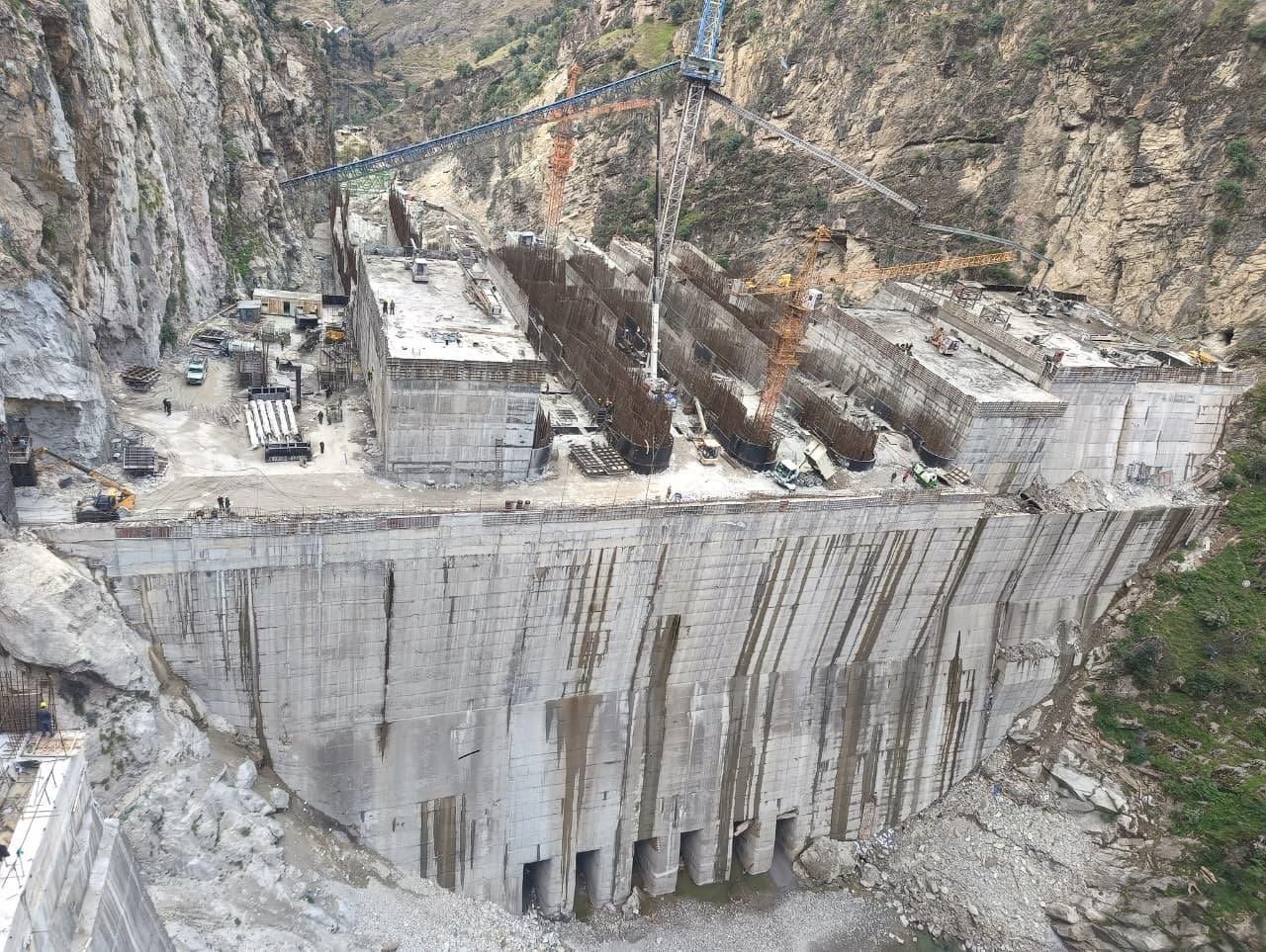The Kiru hydroelectric project, currently under construction on the Chenab River in J&K, has reached a significant milestone with the completion of 10 lakh cubic meters of Dam Concreting, out of a total target of 12 lakh cubic meters. This achievement marks a critical step towards the full realization of the dam structure, bringing the project closer to completion, said an official spokesman.
In another key development, the Stator Assembly of Unit-1 has commenced in the Power House, giving further boost to the pace of Power House completion in line with the project timeline.
On this occasion, MD CVPPL congratulated the entire Kiru Project team for their dedication and hard work. He emphasized the importance of maintaining momentum and urged all to continue striving toward the ultimate goal of completing the project within the scheduled timeframe.
Chenab Valley Power Projects Limited, a Joint Venture Company among NHPC Ltd. (A Govt. of India Enterprise) (51%) and JKSPDC (A Govt. of J&K Enterprise) (49%) is entrusted with the implementation of four Hydroelectric Projects i.e Pakal Dul (1000 MW), Kiru (624 MW), Kwar (540 MW) and Kirthai-II (930 MW) HE Projects in Chenab basin.
Aligning with the Government of India’s mission for the expeditious completion of all hydro projects in the Indus Basin, the Pakal Dul Hydro Electric Project has achieved a remarkable milestone by recording the highest-ever tunnel boring of 927 meters, including tunnel lining, in July 2025.
The project envisages construction of 14.7 km-long Head Race Tunnel (HRT) with an excavated diameter of 8.3 meters, to be executed using Tunnel Boring Machines (TBMs). This includes two HRTs 7.35 km each with two TBMs. With the current progress, a cumulative length of 8.1 km has been completed as of July 2025.
Efforts are underway to expedite the remaining 6.6 km of tunnel boring along with other critical works to ensure the timely commissioning of the project in 2026.
The Pakal Dul Project, categorized as a Project of National Importance, is poised to not only strengthen the energy infrastructure of the region but also contribute significantly to India’s renewable energy transition, reinforcing the country’s commitment to sustainable development.
